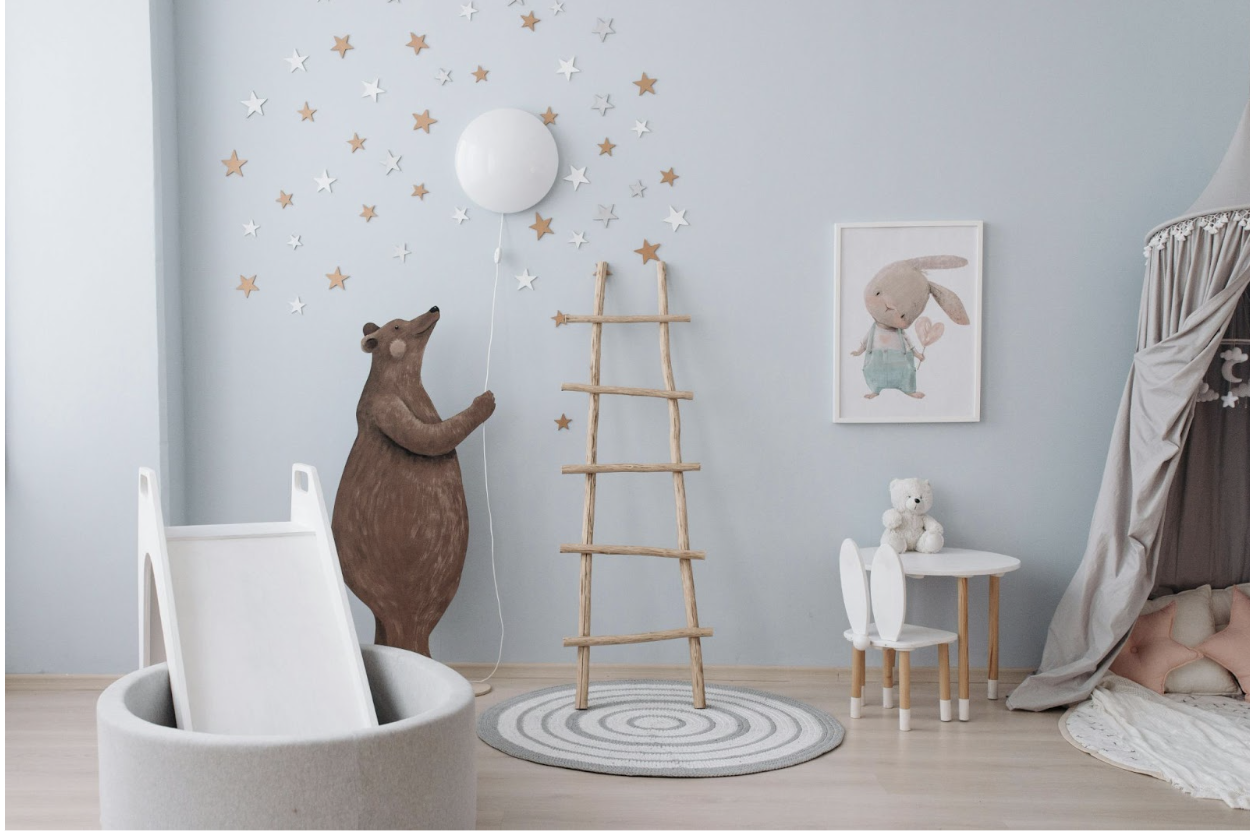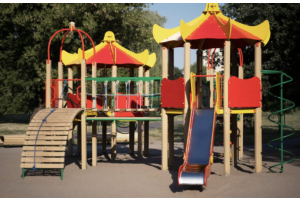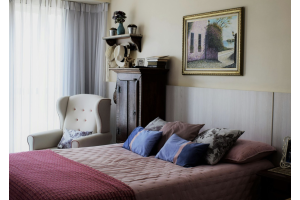6 Design Tips for Creating Baby-Safe Nursery Rooms

Creating a nursery is not only about adding cute baby-inspired objects or choosing if the colours of fabrics should be pink or blue. The safety of children in the nursery room is a top concern that cannot be overstated.
What to Consider When Decorating A Safe Area for Babies and Small Children
Designing a baby-safe space ensures that your child can explore, learn and grow in a secure environment free from any danger. It also gives parents peace of mind knowing that no harm will fall on their babies and toddlers.
Check out these six essential tips that you need to consider as a parent when designing nursery rooms.
1- Choose Safe Floorings and Surfaces
When designing your baby-safe rooms, the design and material for the flooring should be the first thing you consider. Well-designed floors are the foundation of safety in your nursery.
You can also place a custom-made doormat in the room's font to create a bold entrance greeting so you can enter a baby-safe zone with caution. Making clear floor signs and identifying a nursery room are some of the excellent benefits of logo doormats for creating baby-safe spaces. Upon entering, the floors must be well-cushioned with mats and thick, soft rugs.
Organic materials make excellent flooring for nursery rooms. You may opt to do away with traditional carpets, which, according to experts, can trap allergens, dust, and animal hairs.
A good alternative to carpet is carpet tiles or mats which can be used and installed on the floors without the need to use glue, which can be harmful to children.

2- Use Logo Doormats for Added Safety and Style
An often overlooked aspect of nursery safety is the entrance to the room. Logo doormats at the entrance of the nursery serve multiple purposes. Firstly, they help keep the nursery clean by trapping dirt and moisture from shoes. This is especially important if your child spends a lot of time playing on the floor.
Secondly, logo doormats can enhance the safety of the nursery. High-quality, durable doormats can prevent slips and falls, providing a secure surface for parents and children alike. Choosing a doormat with non-slip backing is also crucial to keep them in place and prevent anyone from slipping.
Choose doormats with non-slip backing to ensure they stay in place. The logo on the doormat can also be a fun and welcoming feature, adding a personalised touch to the room.
The role of logo doormats extends beyond aesthetics. Mats add visual clarity and functionality as a clear marker for safe entry points.
3- Create a Separate Play Area
Create a separate space within the nursery that will be used solely for playing. This designated area will help organise the room. This is where you can keep toys, a play table and chairs.
Next, decorate the surfaces covered with soft cushions to prevent injuries and falls. It is also important that your child can crawl freely in this space. Designating the play area as a shoes-off zone is helpful.
Foam mats, soft carpets, or area rugs can provide a comfortable and safe surface for your child to play on.
When choosing carpets or rugs, it's essential to select those made from natural fibres such as wool or cotton. These materials are not only safer but also easier to clean.
Ensure that the rugs have non-slip backings to prevent them from sliding around and causing accidents. Regularly inspect the play area for any small objects or toys that might pose a choking hazard and keep them out of reach.
4 - Secure Furniture and Install Safety Gates
Children are naturally curious and often try to climb furniture, which can lead to serious accidents. To prevent this, ensure that all furniture is securely anchored to the walls. Use furniture straps or brackets to attach dressers, bookcases, and other heavy pieces to the wall. This will prevent them from tipping over if your child tries to climb them.
Safety gates are another essential addition to a kid-safe nursery. Install gates at the entrance of the nursery and at the top and bottom of stairs if the nursery is on an upper floor. Safety gates help keep your child within the safe confines of their room and prevent them from wandering into potentially dangerous areas.
5- Choose non-toxic, child-friendly materials
Small children, especially those in their first months to first year, are curious. Biting things or touching their lips to their toys and other materials they hold onto is innate to them.
As a parent, you may always want to be around your child to watch what they do. You want to discourage them from putting things in their mouths, especially for the safety of teething toddlers.
Opt for non-toxic toys; these would be those with no lead content. It will also help if you intentionally watch out for other volatile compounds so you will not bring them to your kids’ rooms. Look for paints labelled as zero-VOC or low-VOC to ensure that the air quality in the nursery remains safe. You can choose eco-friendly materials for furniture.
Choose organic or non-toxic paint for the walls and floorboards. The decorations must be made from materials that do not contain harmful chemicals, and the toys must be hazard-free.
When selecting furniture, consider pieces that are sturdy and have smooth edges. Avoid furniture with sharp corners or small parts that can become choking hazards.
Organic cotton or bamboo bedding and upholstery are excellent choices, as they are gentle on a baby's skin and free from harmful chemicals.
6 - Pay Attention to Lighting and Electrical Safety
Decorating the nursery rooms with proper lighting will boost the children's comfort and safety, and combining natural light and artificial light will create a well-lit ambience. Use nightlights to provide gentle illumination for nighttime feedings or diaper changes without disturbing your child's sleep.
Electrical safety is another critical consideration. Cover all electrical outlets with safety plugs or outlet covers to prevent curious fingers from exploring them. Keep cords from lamps, monitors, and other devices out of reach and secured against the walls. Use cord shorteners or cord covers to prevent tripping hazards and ensure that your child cannot pull on the cords.
Carefully Plan Your Nursery Design with Child Safety in Mind
With the tips above, you can now plan nursery room designs carefully. You can significantly reduce the risks in your child's nursery by choosing safe floorings, making bold entrance signs, using non-toxic materials, creating a secure play area,, and incorporating proper lighting and safety gates around eclectic outlets..
The peace of mind that comes from knowing your child is safe in their room is invaluable. It allows you to focus on enjoying precious moments with your child, knowing that they are protected from harm. Investing time and effort into creating a safe nursery is an investment in your child's well-being and development.






